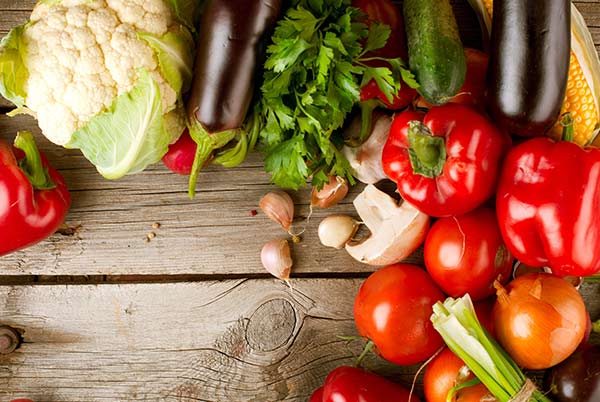
Nourishing Healthy Gluten-Free Children
Feeding a child well is an art as well as a science even in the simplest of circumstances. The value of food goes far beyond nutrients and is a part of crucial development, from oral motor skills to social skills. Early food habits have a huge influence on lifelong food preferences. So it’s a balancing act for parents and children, especially on a glutenfree diet. Cheryl Harris, Registered Dietician and Certified Wellness Coach, shares her tips for fueling those growing bodies!
Children need a combination of protein, fat, carbs, vitamins, and minerals to grow and flourish. Here are the basics:
• Protein is necessary for many functions in the body, including muscle repair and blood sugar regulation.
Options include:
- Fish
- Chicken, turkey, pork, beef
- Eggs
- Dairy
- Beans and lentils
- Tofu or soy
- Nuts and seeds
- Quinoa, buckwheat, and amaranth
• Fat is especially crucial for the development of young brains. There are many gluten-free sources that enrich any diet:
- Fatty fish such as salmon, trout, flounder, and sole. These are a wonderful source of omega-3 fatty acids, which are terrific for lifelong health.
- Nuts such as almonds, walnuts, hazelnuts, and pistachios
- Seeds such as pumpkin or sunflower, which are especially great for nut-allergic children
- Avocados and olives (and their oils)
- Poultry and meat
- Milk, yogurt, or cheese (see “A Word About Dairy” that follows)
• Carbohydrates: Children are born with a preference for sweet, so left to their own devices, they have a tendency to be carb-ivores. Fortunately, there are a wide variety of nutritious gluten-free options:
- Fruits
- Starchy veggies
- Gluten-free grains
While typical “carb” foods like breads and pastas are generally fortified with B vitamins, calcium, and iron, many gluten-free versions are not. Most gluten-free prepared foods are low in fiber, too. The good news is that most veggies have both fiber and B vitamins, meat and fish are a good source of B vitamins and iron, and gluten-free whole grains and beans contain B vitamins, fiber, and iron as well.
Nutrition Through the Ages
Toddlers through Preschool:
• They grow so fast, and that growth uses a lot of calories! Focus on nutrient-dense foods and limit those empty fillers like juice and soda. Fortunately, at this age, your child’s food choices are largely regulated by what’s at home, so parents are both “gatekeepers” and models for the child’s behavior. Monkey see, monkey do!
• Fat is brain food, especially at this age. Whole milk, yogurt, or cheese (see “A Word About Dairy” that follows) is recommended until the age of two.
• Even young children can start to get involved in the kitchen with age appropriate tasks.
Off to School:
• School presents unique challenges, between paper mache projects, birthday parties, cooking activities and even school breakfast or lunch. Parents need to coordinate with the school to make sure that everyone involved understands the medical importance of a gluten-free diet and that reasonable accommodations are made.
• Communication with teachers is vital. It’s critical that teachers are aware of your child’s food restrictions so they can plan alternatives as needed. It’s also a good idea to provide your child with an emergency stash of gluten-free treats, such as fun-sized packs of cookies or chocolate or non-food treats like small toys and games, so your child is never left out.
School lunch is a gray area. Parents have varying levels of comfort handing the reins over to the school cafeteria. If it’s something important for your family or your child, do explore it further. There are terrific sample menus and suggestions through the American Celiac Disease Alliance (www.americanceliac.org.),/p>
Elementary School (6-11 years old):
The same general nutritional needs for protein, fat, and carbs apply, but now there is the added budding independence, peer pressure, and greater opportunity for children to make their own decisions. It’s important that they begin to get involved in food decisions. This age is a great time to:
• Learn how to read food labels for gluten (with parental guidance)
• Label foods gluten-free with a sticker or marker for home or school
• Help with food preparation in the kitchen. This can range from stirring a pot to learning how to make scrambled eggs, depending on age and interest.
• Choose between items for meals (i.e. should we have carrots or broccoli with dinner?)
• It’s also important that children are empowered to ask questions about the food they receive outside the house. This may mean asking teachers or relatives if a food is gluten-free, reading the label themselves, or saying they need to check with Mom or Dad before eating anything.
Teens:
Like toddlers, teens are growing machines! But unlike toddlers, teens have access to fast food, vending machines, friend’s houses, and more. They need to learn to make safe and healthy decisions for themselves. From a nutrition standpoint, teens need everything they did when they were younger, just in a larger quantity. Iron deficiency is common at this age because of rapid growth.
Here are some great sources of iron:
Heme iron (better absorbed)
• Liver
• Beef, turkey, chicken, pork
• Seafood such as oysters, tuna, crab, shrimp, and halibut
Non-heme iron (less well absorbed)
• Soybeans
• Beans and lentils
• Spinach
• Seeds such as pumpkin, sesame, and quinoa
Teens are usually on the go, so it’s key to find a variety of easy, go-to, portable,nutrient-dense foods for snacks on the run, such as:
• Fruit (bananas, apples, pears, etc.)
• Baby carrots, snap peas, sliced peppers, sliced cucumbers, cherry tomatoes, etc.
• Baggie of nuts or seeds
• Apple slices with peanut butter
• Roasted garbanzo beans
• One of the many gluten-free bars: LaraBars®, Pure Bars®, Kind Bars®, Nugo® Bars, The Simply Bar®, Bumble Bars®
• Dried fruit, fruit leathers, etc.
• Gluten-free crackers, such as Mary’s Gone Crackers® or Crunchmaster®
• Homemade trail mix
• Jerky
• Popcorn
• Gluten-free cookies or other treats (my favorites are Caveman Cookies®) Refrigeration, a spoon, or a little more space needed:
• Sliced veggies with salsa, hummus, or guacamole
• Sliced hard-boiled egg
• Yogurt
• String cheese
• Applesauce or fruit cup (in own juices)
• Pickles
• Homemade fruit smoothies
A Word About Dairy
All of our bodies need calcium, and that’s non-negotiable, but dairy is optional. Some children need to avoid dairy because of an allergy or sensitivity. There are also low-lactose dairy options for lactose intolerant little ones.
Good sources of lactose-free dairy with calcium:
• Lactose-free yogurt
• Lactose-free milk (i.e. Lactaid)
• Hard cheeses
Dairy-free options which supply calcium:
• Fortified “milks” such as almond, hazelnut, hemp, rice, and soy
• Fortified juices
• Green veggies: turnip greens, collards, kale, spinach, bok choy, broccoli
• Tofu and other beans
• Fish, such as salmon and trout
• Nuts and seeds, such as almonds and sesame seeds
• If your child is dairy-free, do check in with a knowledgeable Registered Dietitian or nutrition professional to make sure your child meets his or her needs for growth and health




Pingback: Gluten Free Vegan Stroganoff Recipe | Simply Gluten Free
Pingback: Gluten Free Chicken Piccata Recipe | Simply Gluten Free
Pingback: Gluten Free Sunbutter and Banana Muffins Recipe | Simply Gluten Free
Pingback: Gluten Free Sunbutter & Banana Pancakes | Recipes | Simply Gluten Free